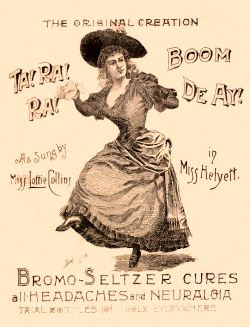|
NIH Classification Of Headaches
The NIH classification of headaches consists of brief, relatively vague glossary-type definitions of a limited number of headaches. It outlines five types of headache: vascular, myogenic (muscle tension), cervicogenic, traction, and inflammatory. Vascular The most common type of vascular headache is ''migraine''. Migraine headaches are usually characterized by severe pain on one or both sides of the head, an upset stomach, and, for some people, disturbed vision. It is more common in women. While vascular changes are evident during a migraine, the cause of the headache is neurological, not vascular. After migraine, the most common type of vascular headache is the Toxic headache, "toxic" headache produced by fever. Other kinds of vascular headaches include ''cluster headaches'', which are very severe recurrent short lasting headaches, often located through or around either eye and often wake the patients up at the same time every night. Unlike migraines, these headaches are mor ... [...More Info...] [...Related Items...] OR: [Wikipedia] [Google] [Baidu] |
Headaches
A headache, also known as cephalalgia, is the symptom of pain in the face, head, or neck. It can occur as a migraine, tension-type headache, or cluster headache. There is an increased risk of depression in those with severe headaches. Headaches can occur as a result of many conditions. There are a number of different classification systems for headaches. The most well-recognized is that of the International Headache Society, which classifies it into more than 150 types of primary and secondary headaches. Causes of headaches may include dehydration; fatigue; sleep deprivation; stress; the effects of medications (overuse) and recreational drugs, including withdrawal; viral infections; loud noises; head injury; rapid ingestion of a very cold food or beverage; and dental or sinus issues (such as sinusitis). Treatment of a headache depends on the underlying cause, but commonly involves pain medication (especially in case of migraine or cluster headaches). A headache is one ... [...More Info...] [...Related Items...] OR: [Wikipedia] [Google] [Baidu] |
Vascular Headache
A vascular headache is an outdated term to describe certain types of headache which were thought to be related to blood vessel swelling and hyperemia as cause of pain. There is no doubt that ''some'' headaches are caused by vascular effects. However, it is no longer a recognized term and not mentioned in the Headache classification of the International Headache society (IHS), although it is still used by some physicians and still mentioned in some medical classification systems. There are many types of vascular headaches. Other types of vascular headaches include headaches produced by fever, cluster headaches, and headaches from a rise in blood pressure (OSU Wexner Medical Center, 2012). Headaches that were described as being vascular headaches include: * Cluster headache * Migraine Migraine (, ) is a complex neurological disorder characterized by episodes of moderate-to-severe headache, most often unilateral and generally associated with nausea, and light and sound sensi ... [...More Info...] [...Related Items...] OR: [Wikipedia] [Google] [Baidu] |
Inflammation
Inflammation (from ) is part of the biological response of body tissues to harmful stimuli, such as pathogens, damaged cells, or irritants. The five cardinal signs are heat, pain, redness, swelling, and loss of function (Latin ''calor'', ''dolor'', ''rubor'', ''tumor'', and ''functio laesa''). Inflammation is a generic response, and therefore is considered a mechanism of innate immunity, whereas adaptive immunity is specific to each pathogen. Inflammation is a protective response involving immune cells, blood vessels, and molecular mediators. The function of inflammation is to eliminate the initial cause of cell injury, clear out damaged cells and tissues, and initiate tissue repair. Too little inflammation could lead to progressive tissue destruction by the harmful stimulus (e.g. bacteria) and compromise the survival of the organism. However inflammation can also have negative effects. Too much inflammation, in the form of chronic inflammation, is associated with variou ... [...More Info...] [...Related Items...] OR: [Wikipedia] [Google] [Baidu] |
Sinusitis
Sinusitis, also known as rhinosinusitis, is an inflammation of the mucous membranes that line the sinuses resulting in symptoms that may include production of thick nasal mucus, nasal congestion, facial congestion, facial pain, facial pressure, loss of smell, or fever. Sinusitis is a condition that affects both children and adults. It is caused by a combination of environmental and a person's individual health factors. It can occur in individuals with allergies, exposure to environmental irritants, structural abnormalities of the nasal cavity and sinuses and poor immune function. Most cases are caused by a viral infection. Recurrent episodes are more likely in persons with asthma, cystic fibrosis, and immunodeficiency. The diagnosis of sinusitis is based on the symptoms and their duration along with signs of disease identified by endoscopic and/or radiologic criteria. Sinusitis is classified into acute sinusitis, subacute sinusitis and chronic sinusitis. In acute sinusit ... [...More Info...] [...Related Items...] OR: [Wikipedia] [Google] [Baidu] |
New Daily Persistent Headache
New daily persistent headache (NDPH) is a primary headache syndrome which can mimic chronic migraine and chronic tension-type headache. The headache is daily and unremitting from very soon after onset (within 3 days at most), usually in a person who does not have a history of a primary headache disorder. The pain can be intermittent, but lasts more than 3 months. Headache onset is abrupt and people often remember the date, circumstance and, occasionally, the time of headache onset. One retrospective study stated that over 80% of patients could state the exact date their headache began. The cause of NDPH is unknown, and it may have more than one etiology. NDPH onset is commonly associated with an infection or flu-like illness, stressful life event, minor head trauma, and extra cranial surgery. Infection or flu-like illness and stressful life event are most often cited. The pathophysiology of NDPH is poorly understood. The syndrome is difficult to treat and may persist for years. Th ... [...More Info...] [...Related Items...] OR: [Wikipedia] [Google] [Baidu] |
Hangover
A hangover is the experience of various unpleasant physiological and psychological effects usually following the consumption of alcohol (beverage), alcohol, such as wine, beer, and liquor. Hangovers can last for several hours or for more than 24 hours. Typical symptoms of a hangover may include headache, Somnolence, drowsiness, weakness, concentration problems, Xerostomia, dry mouth, dizziness, fatigue (medical), fatigue, muscle ache, gastrointestinal distress (e.g., nausea, vomiting, diarrhea), Anorexia (symptom), absence of hunger, Photophobia, light sensitivity, Depression (mood), depression, Perspiration, sweating, hyper-excitability, high blood pressure, irritability, and Anxiety attack, anxiety. While the causes of a hangover are still poorly understood, several factors are known to be involved including acetaldehyde accumulation, changes in the immune system and glucose metabolism, dehydration, metabolic acidosis, disturbed prostaglandin synthesis, increased cardiac out ... [...More Info...] [...Related Items...] OR: [Wikipedia] [Google] [Baidu] |
Drug Withdrawal
A drug is any chemical substance other than a nutrient or an essential dietary ingredient, which, when administered to a living organism, produces a biological effect. Consumption of drugs can be via insufflation (medicine), inhalation, drug injection, injection, smoking, ingestion, absorption (skin), absorption via a dermal patch, patch on the skin, suppository, or sublingual administration, dissolution under the tongue. In pharmacology, a drug is a chemical substance, typically of known structure, which, when administered to a living organism, produces a biological effect. A pharmaceutical drug, also called a medication or medicine, is a chemical substance used to pharmacotherapy, treat, cure, preventive healthcare, prevent, or medical diagnosis, diagnose a disease or to promote well-being. Traditionally drugs were obtained through extraction from medicinal plants, but more recently also by organic synthesis. Pharmaceutical drugs may be used for a limited duration, or on a re ... [...More Info...] [...Related Items...] OR: [Wikipedia] [Google] [Baidu] |
Post-dural Puncture Headache
Post-dural-puncture headache (PDPH) is a complication of puncture of the dura mater (one of the membranes around the brain and spinal cord). The headache is severe and described as "searing and spreading like hot metal", involving the back and front of the head and spreading to the neck and shoulders, sometimes involving neck stiffness. It is exacerbated by movement and sitting or standing and is relieved to some degree by lying down. Nausea, vomiting, pain in arms and legs, hearing loss, tinnitus, vertigo, dizziness and paraesthesia of the scalp are also common. PDPH is a common side effect of lumbar puncture and spinal anesthesia. Leakage of cerebrospinal fluid causes reduced fluid pressure in the brain and spinal cord. Onset occurs within two days in 66% of cases and three days in 90%. It occurs so rarely immediately after puncture that other possible causes should be investigated when it does. Using a pencil-point needle rather than a cutting spinal needle decreases the ri ... [...More Info...] [...Related Items...] OR: [Wikipedia] [Google] [Baidu] |
Red Wine Headache
Red wine headache describes a headache, often accompanied by nausea and flushing, that occurs after consuming red wine by susceptible individuals. White wine headaches have been less commonly reported. A 2025 review found insufficient evidence to indicate that consumption of red or white wine triggered migraine headaches. Speculative causes Sulfites Many wines contain a warning label about sulfites, and some people believe that sulfites are the cause of headaches and other allergic and pseudoallergic reactions. However, this may not be the case.K. MacNeil ''The Wine Bible'' pg 34 Workman Publishing 2001 Dried fruit and processed foods like lunch meat have more sulfites than red wine. Reactions to sulfites are not considered a "true allergy" and reactions more commonly occur in persons with asthma and may manifest themselves in difficulty breathing or skin reactions, rather than headache. Some wines may be exempt from including a sulfite warning. Wines that have under 10mg/ ... [...More Info...] [...Related Items...] OR: [Wikipedia] [Google] [Baidu] |
Rebound Headache
A medication overuse headache (MOH), also known as a rebound headache, usually occurs when painkillers are taken frequently to relieve headaches. These cases are often referred to as painkiller headaches. Rebound headaches frequently occur daily, can be very painful and are a common cause of chronic daily headache. They typically occur in patients with an underlying headache disorder such as migraine or tension-type headache that "transforms" over time from an episodic condition to chronic daily headache due to excessive intake of acute headache relief medications. MOH is a serious, disabling and well-characterized disorder, which represents a worldwide problem and is now considered the third-most prevalent type of headache. The proportion of patients in the population with Chronic Daily Headache (CDH) who overuse acute medications ranges from 18% to 33%. The prevalence of medication overuse headache (MOH) varies depending on the population studied and diagnostic criteria used. Howev ... [...More Info...] [...Related Items...] OR: [Wikipedia] [Google] [Baidu] |
Hemicrania Continua
Hemicrania continua (HC) is a persistent unilateral headache that responds to indomethacin. It is usually unremitting, but rare cases of remission have been documented. Hemicrania continua is considered a primary headache disorder, meaning that another condition does not cause it. Symptoms In hemicrania continua, basal pain is a dull aching pressure similar to that of TTHs (Tension-Type Headaches) that occurs nearly always on the same side of the head and face. Pain ranges from mild to severe and is characterized by fluctuations that increase in intensity up to three to five times per 24-hour cycle. The range of duration of exacerbations has no boundaries and varies from a few seconds to up to two weeks. While attacks tend to be more frequent at night, no circadian periodicity such as in cluster headache can be observed. The nature of pain changes during the exacerbation phase, becoming more piercing, throbbing, and intense, generally paired with other highly debilitating symp ... [...More Info...] [...Related Items...] OR: [Wikipedia] [Google] [Baidu] |



